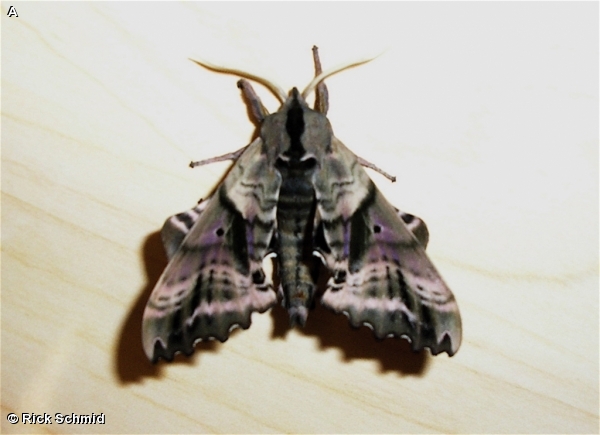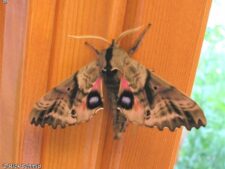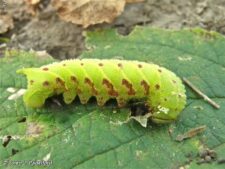
The Blinded Sphinx has a wingspan of approximately 3.75 inches. The wings have scalloped outer margins. The forewing is tan at the base and darker brown distally with light tan lines and black markings and spots. The upper half of the hindwing is brown and the lower half is pink. The large black spot near the inner margin has a central blue spot with no central black spot or “pupil” inside. Hence the name Blinded Sphinx. The larva is bright green with dense white granular speckles especially in the early instars. The head is green and triangular. The posterior horn is green and somewhat arched. Some individuals have red spots along the sides.
This moth is thought to be common in Fontenelle Forest and Neale Woods. Adults are most common in June and July, and may be seen coming to lights. Larvae are present June through fall.
Adults have no mouthparts and do not feed. The larvae feed on a variety of deciduous trees and shrubs including apple, basswood, elm, hawthorn, serviceberry and willow. The larva pupates in fall and overwinters as a pupa.
Disclaimer: The content of NatureSearch is provided by dedicated volunteer Naturalists of Fontenelle Forest who strive to provide the most accurate information available. Contributors of the images retain their copyrights. The point of contact for this page is: Babs Padelford.


